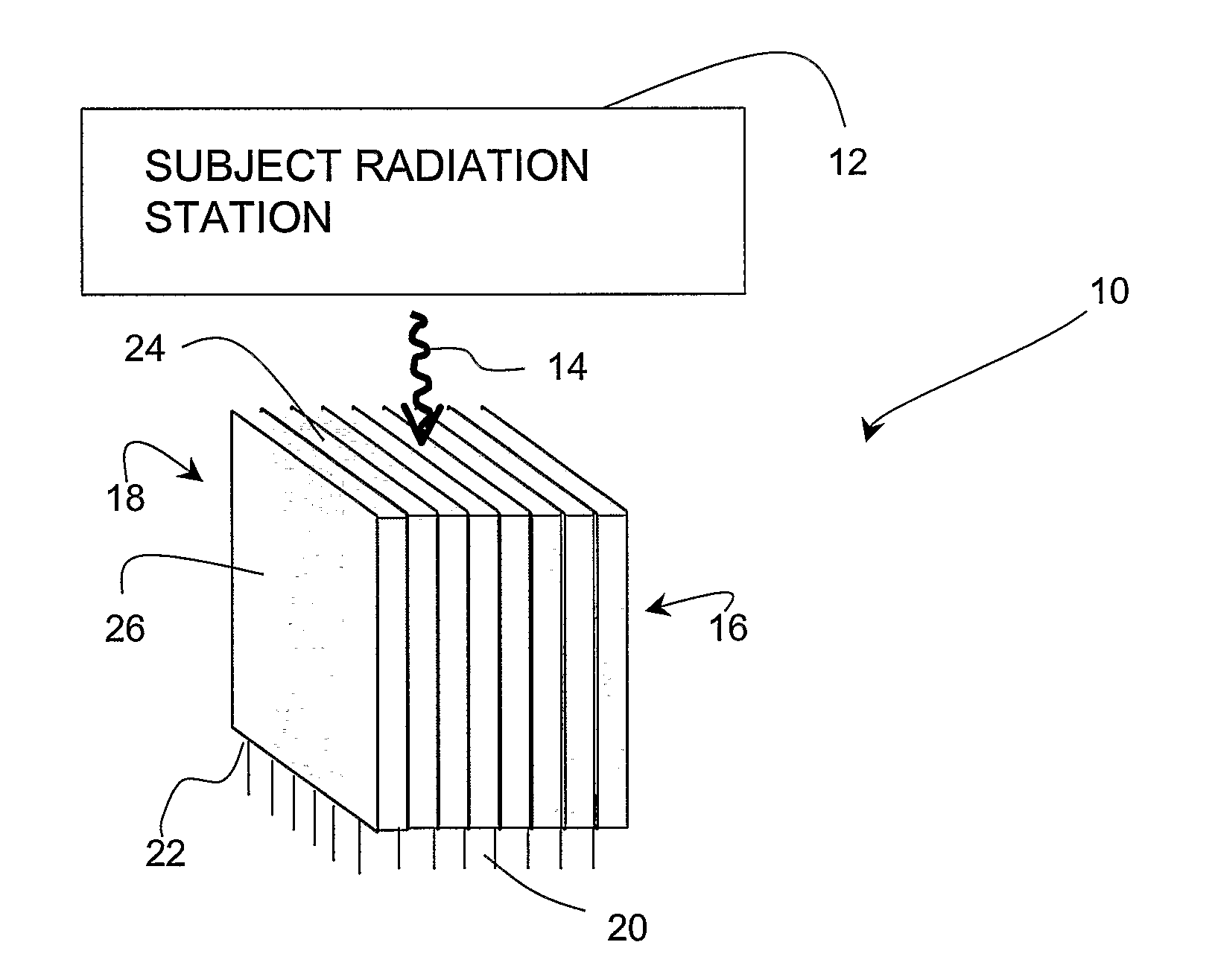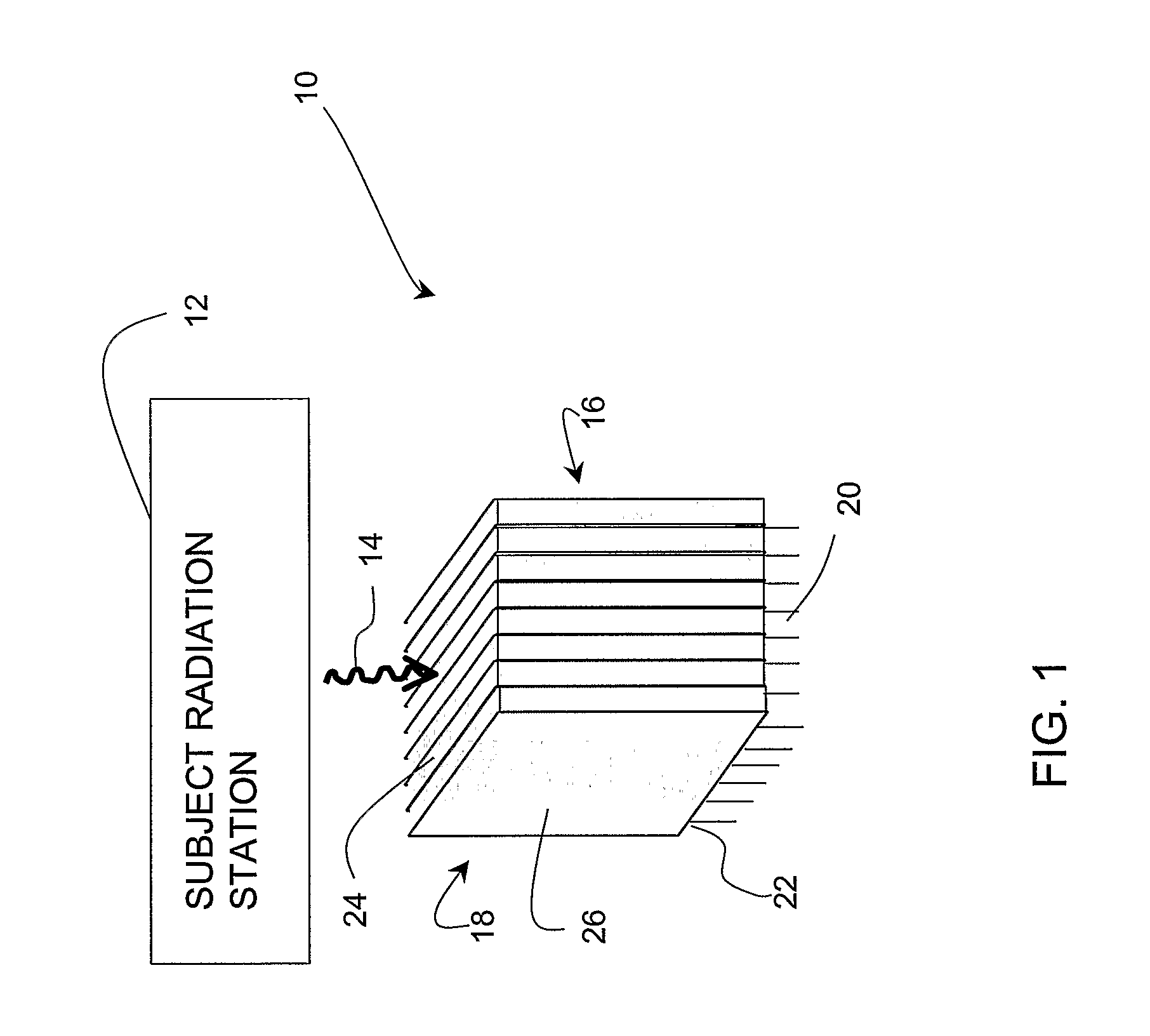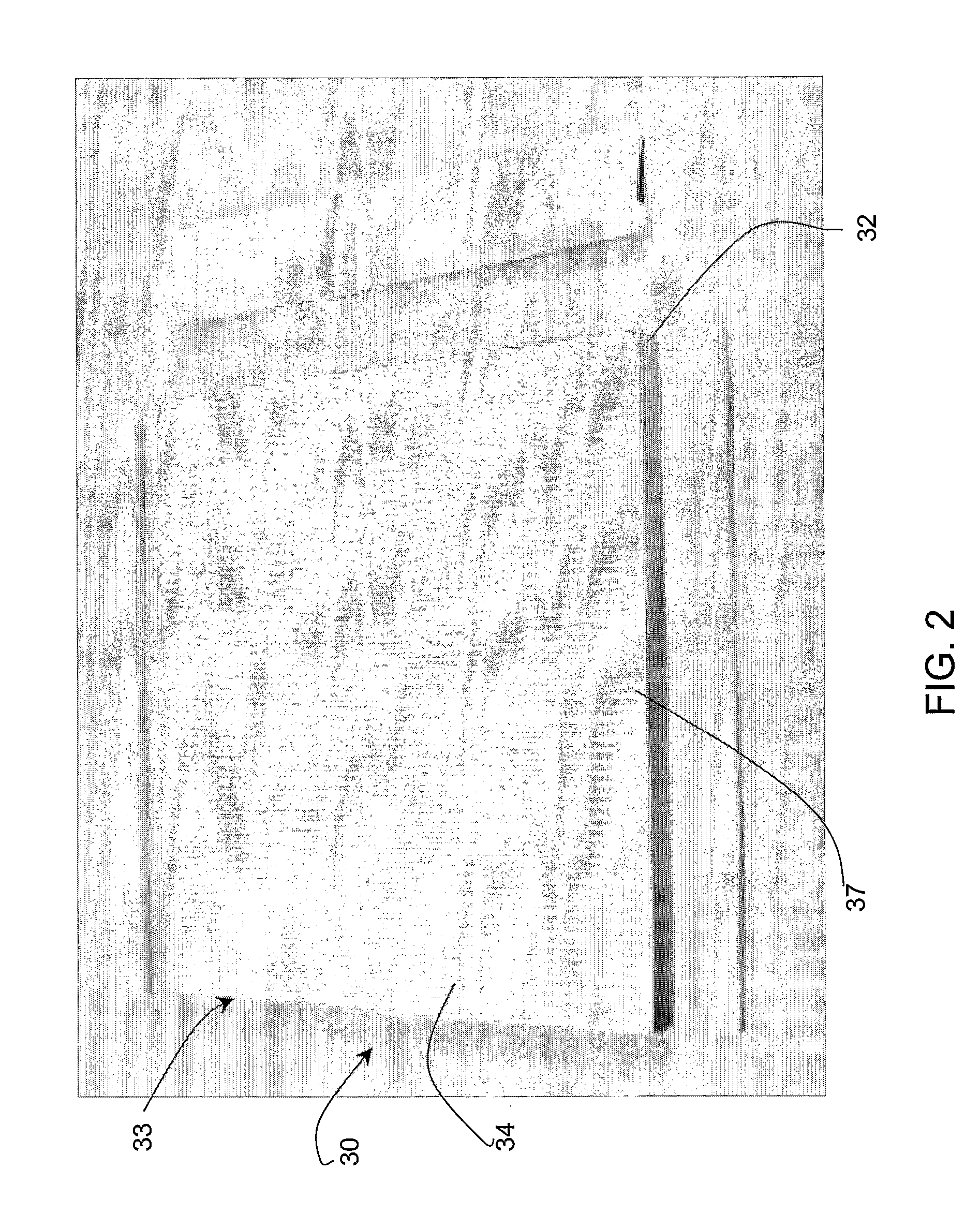Semiconductor Crystal High Resolution Imager
a semiconductor and crystal technology, applied in the field of high-resolution radiation imaging, can solve the problems of high-energy photon emission, limiting factors, and detection sensitivity, and manufacturing is a significant challeng
- Summary
- Abstract
- Description
- Claims
- Application Information
AI Technical Summary
Benefits of technology
Problems solved by technology
Method used
Image
Examples
Embodiment Construction
[0035] Preferred embodiments of the present invention provide, among other things, a radiation imaging device that includes a subject radiation station producing photon emissions, and a semiconductor crystal detector that is arranged to directly detect the emitted photons from the radiation station and produce electric pulses. As opposed to conventional radiation imaging such as used in conventional PET, a scintillation crystal is not necessary. This allows direct, and more efficient, conversion of the emitted photons into an electrical signal as compared to scintillation-based detectors.
[0036] The crystal detectors are made from a high-density, high atomic number (z) semiconductor. Such semiconductors are selected from materials that are able to provide the necessary absorption of 511 keV photons for high-quality imaging. In a preferred embodiment, the semiconductor Cadmium-Zinc-Telluride (CZT) is used, though other high-z semiconductors may be used, including but not limited to m...
PUM
 Login to View More
Login to View More Abstract
Description
Claims
Application Information
 Login to View More
Login to View More - R&D
- Intellectual Property
- Life Sciences
- Materials
- Tech Scout
- Unparalleled Data Quality
- Higher Quality Content
- 60% Fewer Hallucinations
Browse by: Latest US Patents, China's latest patents, Technical Efficacy Thesaurus, Application Domain, Technology Topic, Popular Technical Reports.
© 2025 PatSnap. All rights reserved.Legal|Privacy policy|Modern Slavery Act Transparency Statement|Sitemap|About US| Contact US: help@patsnap.com



